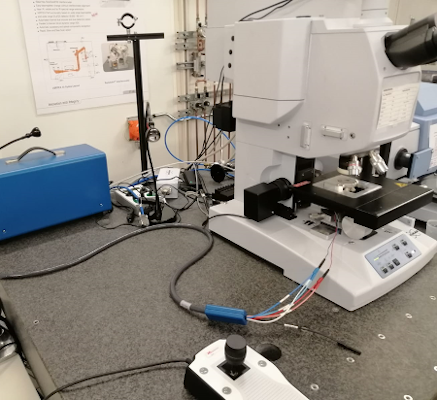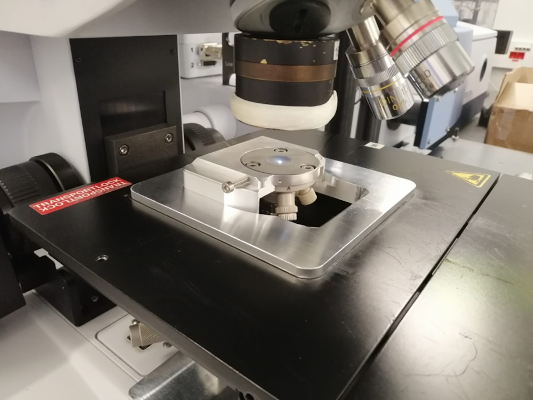

Operando Cell (ECC-Opto-Std, EL CELL)
Cerdanyola del Vallès, 21st December 2023 Organic positive electrodes, in addition to being the most sustainable and potentially low-cost candidates, compared with their inorganic counterparts, currently present the best electrochemical performances in calcium and magnesium batteries. Unfortunately, organic positive electrodes suffer from relatively low capacity retention upon cycling, the origin of which is not yet fully understood.
ICMAB-CSIC scientists tested a plastic material called polyimide (specifically 1,4,5,8-naphthalenetetracarboxylic dianhydride-derived polyimide or PNTCDA) in lithium (Li), sodium (Na), magnesium (Mg) and calcium (Ca) cells. In particular, the electrochemical performance of PNTCDA was evaluated as positive electrode for Li+, Na+, Mg2+ and Ca2+-ion batteries in organic electrolytes; for the sake of comparison in terms of redox potential, gravimetric capacities, capacity retention, and rate capability.
The redox mechanisms were also investigated by means of operando infrared experiments at the MIRAS beamline of the ALBA Synchrotron, and a parameter affecting most figures of merit has been identified: the presence of contact ion-pairs in the electrolyte. Moreover, operando infrared assisted experiments on Li+ and Ca2+ ion cells allowed scientists to observe the reversible enolation/carbonylation processes of the carbonyl bonds in the imide functionalities in real time.
Remarkable capacity and capacity retention in Li and Na based electrolytes (> 135 mAh.g-1 at C/2) and promising electrochemical performances in divalent cells (90 and 45 mAh.g-1, respectively for Ca2+ and Mg2+ at C/2) were recorded.
The larger divalent cation solvation shell due to higher coordination number and higher tendency to form ion pairs may explain the discrepancy between monovalent and divalent capacities, with Mg cell having the lowest capacity as contact ion pair formation is known to be exacerbated compared with other cations. Therefore, it is expected that a careful cation solvation shell engineering, aiming at more compact cation complexes, could be beneficial in terms of material utilization (specific capacity).
All cells presented rather small voltage hysteresis being only slightly affected by the C-rate, resulting in excellent rate capability, as well as good coulombic efficiencies with 96% for Li+ and Mg2+ cells and 99% for Na and Ca. Such performances are highly encouraging, especially for the development of Ca and Mg based batteries for which achieving satisfactory performance is still extremely challenging. In particular, these performances are far superior when compared to the traditional inorganic and advanced organic electrode in Ca-ion cells.
Overall, this work highlights various promising strategies for the development of Ca and Mg organic based cathodes with improved capacity, cycle life and operating potential.
Reference: Damien Monti, Nagaraj Patil, Ashley P. Black, Dionysios Raptis, Andreas Mavrandonakis, George E. Froudakis, Ibraheem Yousef, Nicolas Goujon, David Mecerreyes, Rebeca Marcilla, Alexandre Ponrouch. Polyimides as Promising Cathodes for Metal–Organic Batteries: A Comparison between Divalent (Ca2+, Mg2+) and Monovalent (Li+, Na+) Cations. ACS Applied Energy Materials, 2023, 6, 13, 7250–7257. doi:10.1021/acsaem.3c00969




